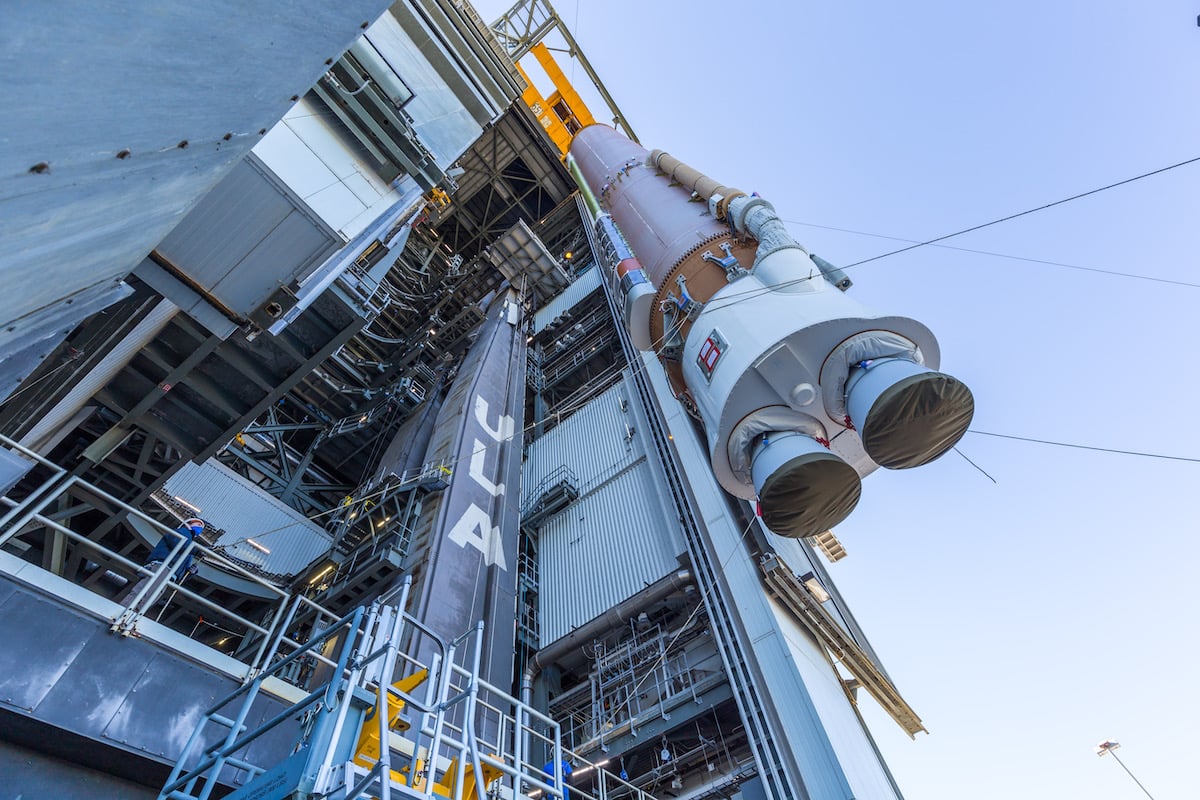Atlas V Rocket Prepares for ‘Silent Barker Mission’ Spy Satellite Launch

United Launch Alliance has unveiled its Atlas V rocket for the Silent Barker mission, a highly confidential government mission deployment
(Photo: NASA Mars Exploration)
Atlas V Rocket Gears Up for ‘Silent Barker Mission’ Spy Satellite Launch, Set for Tuesday Morning
According to an article from Space, United Launch Alliance (ULA) has transported its Atlas V rocket to Space Launch Complex-41 at Florida’s Cape Canaveral Space Force Station in preparation for a covert mission set to launch next Tuesday, August 29th, at 8:34 a.m. EDT. This classified endeavor, dubbed the Silent Barker mission, is a collaboration between the U.S. Space Force and the National Reconnaissance Office (NRO), designed to bolster space-based capabilities for object detection, tracking, and event monitoring. While detailed specifics of the mission remain undisclosed, it aligns with the NRO’s tradition of secrecy surrounding its fleet of spy satellites.
The Silent Barker mission, or NROL-107, mission’s primary objective is to provide space-based sensor technology for timely object custody and event detection. This mission plays a pivotal role in equipping national decision-makers, military personnel, and intelligence analysts with critical intelligence data to safeguard the nation’s interests and support humanitarian initiatives on a global scale.
Notably, the Atlas V rocket, with an impressive track record of 97 successful launches, including 17 carrying NRO payloads, stands as the reliable workhorse for this mission. However, ULA is set to retire the Atlas V in favor of the new Vulcan Centaur rocket, marking a transition in the company’s launch capabilities. The Silent Barker mission promises to further enhance our capabilities in space-based surveillance and intelligence gathering.
READ ALSO: Most Dangerous Places In South Carolina After Sundown
Classified ‘Silent Barker Mission’ Revolutionizes Space Surveillance with Groundbreaking Space-Based Sensor Technology
According to ULA, Space-based surveillance serves as a crucial complement to and surmounts the limitations of, ground-based sensors by offering round-the-clock data collection above weather conditions. This unique capability, achievable solely through space-based sensors, facilitates the transmission of its findings to satellite operators, analysts, and other stakeholders.
Due to its classified nature, the government has refrained from disclosing comprehensive information about the payload’s content and the extent of its capabilities. The National Reconnaissance Office (NRO) characterizes the Silent Barker mission as a collaborative endeavor between the NRO and the U.S. Space Force, with a focus on enhancing space domain awareness to address the security needs of the Department of Defense and the intelligence community.
United Launch Alliance (ULA) has a track record of 17 successful Atlas V rocket launches in support of NRO missions. Tuesday’s upcoming launch marks the 18th and final mission from Cape Canaveral, as confirmed by the NRO. This mission, known as the Silent Barker mission, will feature not only the robust Atlas V rocket but also the Centaur upper stage, a high-performance vehicle powered by liquid hydrogen and liquid oxygen, generating 106 kilo-newtons of thrust.
READ ALSO: Rapper Polo G Arrested On Kidnapping, Robbery, And Assault









